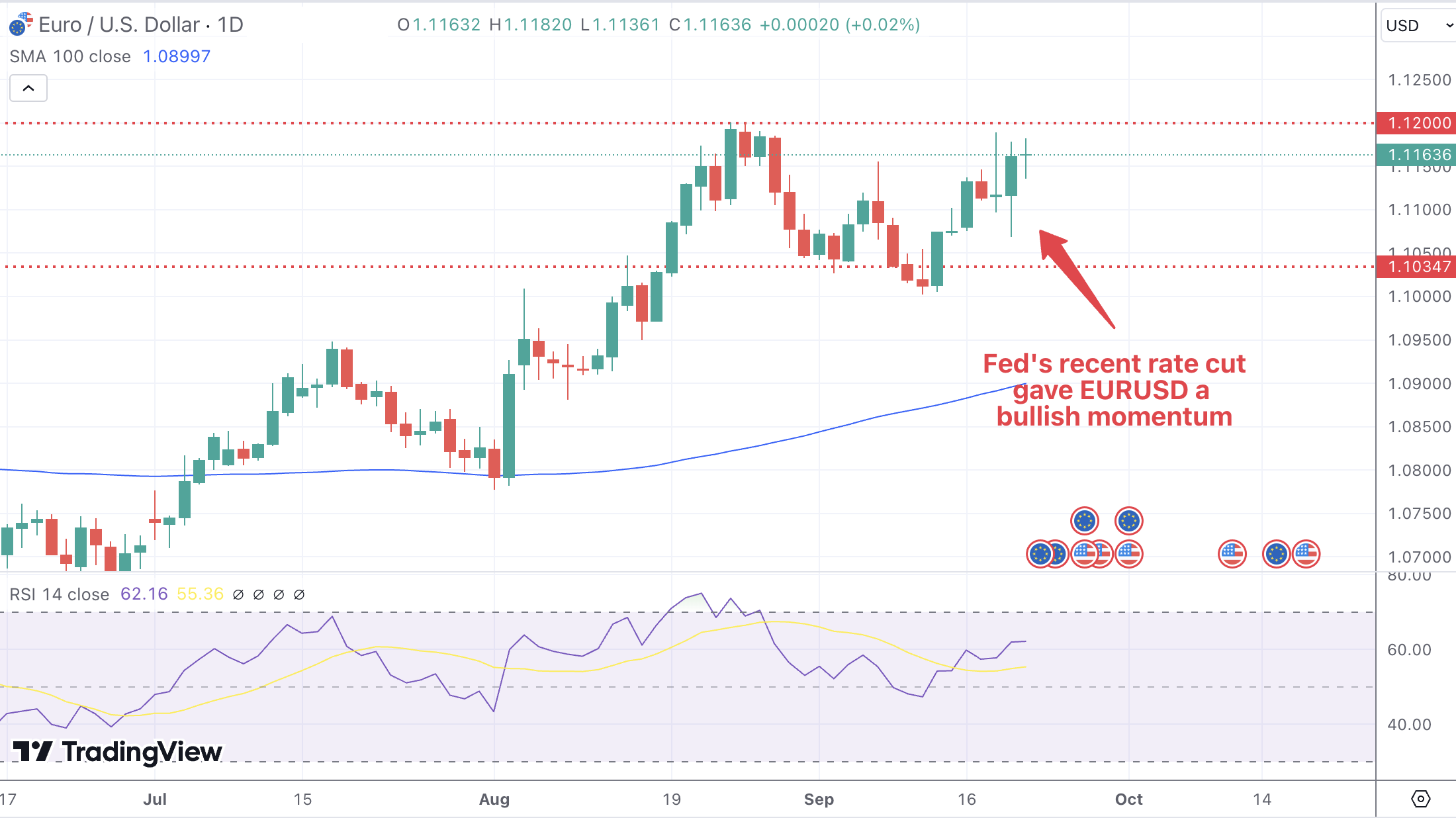Key Takeaways
- EUR/USD ended last week near 1.1160 after hitting highs around 1.1190, showing strong bullish momentum.
- The Federal Reserve’s surprise 50 basis point rate cut played a major role in pushing the US dollar lower.
- The ECB remains flexible with its monetary policy, with traders awaiting upcoming Eurozone PMI data.
- US GDP data to be released this week will be a significant driver of volatility in the EUR/USD pair.
- The pair may test highs near 1.1200, but sustained upside will depend on weaker US growth figures.
Market Dynamics and Recent Performance
The EUR/USD pair exhibited a strong performance over the past week, reaching highs near 1.1190, and maintaining levels around 1.1160 by the end of the trading week. Market sentiment leaned bullish, driven by the Federal Reserve’s aggressive 50 basis point rate cut, pushing the US dollar lower. This surprise move by the Fed created an environment where investors increasingly anticipated more dovish actions from both the Federal Reserve and the European Central Bank (ECB).
The euro has also been bolstered by the anticipation of economic data releases, particularly the Purchasing Managers’ Index (PMI) from the Eurozone and Germany. These metrics provide crucial insights into business activity and overall economic health, with traders keeping a close eye on any underperformance that could impact ECB policy decisions.
Technical and Fundamental Influences
Technically, the EUR/USD pair has tested both its upper and lower limits over the past week. The pair touched a high of 1.1190 and a low of 1.1069 but managed to recover quickly, reflecting strong underlying bullish momentum. The Fed’s recent rate cut has played a central role in this movement, as investors recalibrate their expectations for future rate adjustments in the US. In contrast, ECB President Christine Lagarde has highlighted the need for flexibility in monetary policy, which has helped maintain market confidence in the euro’s strength.
From a fundamental perspective, the EUR/USD pair remains sensitive to upcoming US economic data. With US Gross Domestic Product (GDP) figures set to be released this week, further volatility is expected. A weaker-than-expected GDP report could push the euro higher, as it may reinforce the narrative of additional rate cuts from the Fed. On the other hand, stronger-than-expected growth data could lend support to the US dollar, potentially halting the euro’s upward trend.
Looking Forward
Looking ahead, the EUR/USD is expected to remain in a volatile range, driven by key economic data releases. The anticipated release of US GDP figures this week and upcoming employment data in early October will be crucial for short-term traders. If US economic performance underwhelms, the market may price in additional Fed rate cuts, potentially driving the EUR/USD towards the 1.1200 mark or higher.
However, the uncertainty surrounding the US Federal Reserve’s next steps and the upcoming ECB policy announcement in October will likely keep the pair fluctuating within familiar levels. Traders should remain cautious of sharp movements as the market digests new economic data and central bank signals, with volatility expected to persist over the next month.


